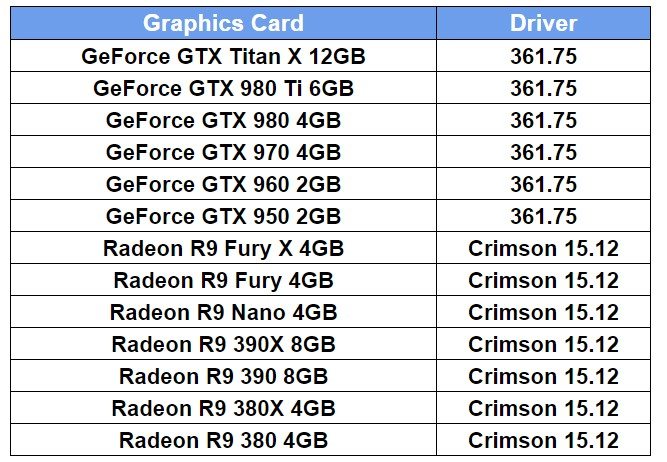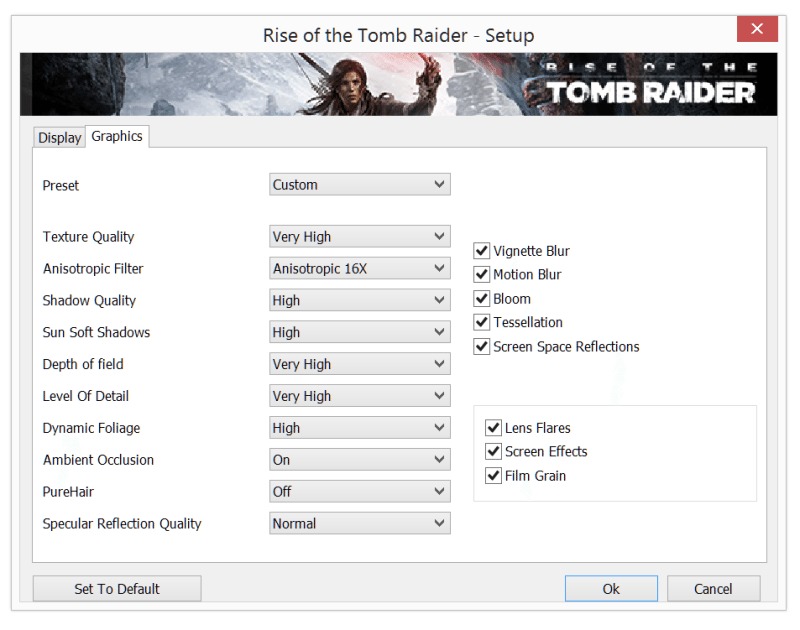Rise of the Tomb Raider Performance Analysis
John Williamson / 9 years ago
Test Systems and Procedures
Before we delve into any testing we would like to take this opportunity to overview our test system.
Test System
- Motherboard – Gigabyte X99-Gaming G1 WiFi LGA 2011-3 Motherboard
- Processor – Intel Core i7 5820K at Stock 3.3GHz
- RAM – 16GB (4 X 4GB) Crucial Ballistix Sport DDR4 2400MHz
- CPU Cooler – Thermaltake Water 3.0 with Gelid GC-Extreme
- Power Supply – BeQuiet Dark Power Pro 11 1200w
- Main Storage Drive – Crucial M550 512GB
- Chassis – Lian Li T80 Test Bench
- Displays – AOC U2868PQU 4K
- Operating System – Windows 8.1 Pro 64 Bit
Driver Details
We always ensure the latest drivers are used at the time of testing to find each GPU’s current potential.

Games Used
- Rise of the Tomb Raider
Game Version
It can be quite challenging for any system analysis to remain completely accurate due to driver enhancements and improved optimization through post-release patches. Therefore, it’s imperative to provide readers with this information so they can easily determine how the results might differ in a few months time. As you can see, the latest patch updates the game to version 1.0.615.5 and helps in GPU-bound scenarios. This means the data is up-to-date and a more accurate depiction of the performance compared to initial analysis on release.

Test Procedure
Rise of the Tomb Raider contains a number of presets, and oddly enough the Very High setting doesn’t run everything on maximum details. However, this preset is still extremely demanding and the highest default configuration on offer. Please note, when using the Very High preset, NVIDIA’s propriety HBAO+ solution is selected alongside AMD’s open source PureHair technology. Even though PureHair has a minimal impact on performance given the clear visual benefits, it’s enough to become noticeable. HBAO+ can be another source of frame drops and in the interest of fairness, both PureHair and HBAO+ have been disabled to nullify the impact of any vendor-based technologies.
On another note, some consumers dislike FXAA so much that they prefer to disregard it entirely. Typically, FXAA is used to add a very primitive and fast form of Anti-Aliasing without having a marked performance impact. There’s a wide range of better alternatives out there which encouraged us to disable FXAA during the benchmarking process.
Unlike its predecessor, the game’s options menu doesn’t include a benchmarking tool which means we have to rely on MSI Afterburner to monitor the frame-rate in real-time. Subsequently, there’s a greater variation between runs compared to a traditional benchmark and more room for user error. To determine the performance, two thirty-second runs were recorded on the Siberia and Syria locations with an average figure forming the final result.



















